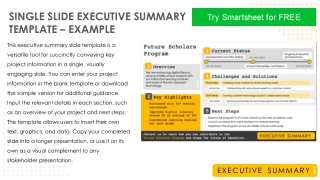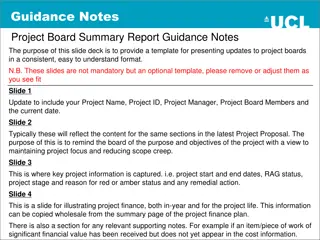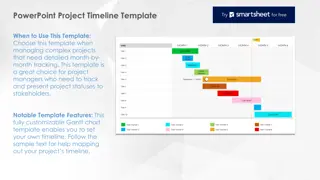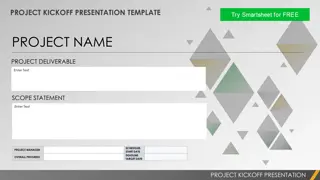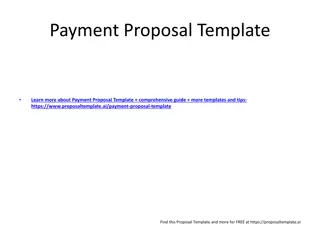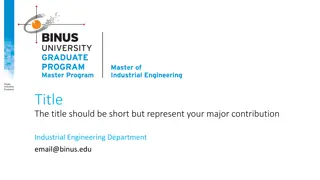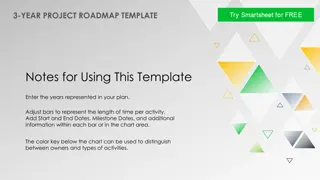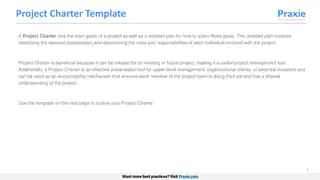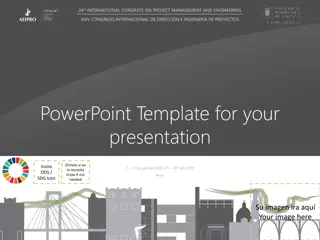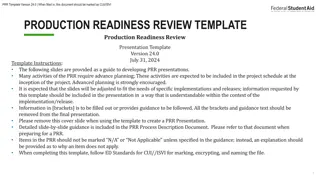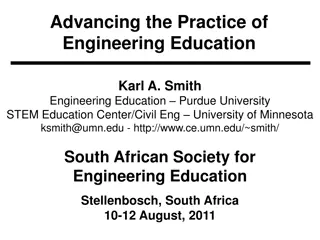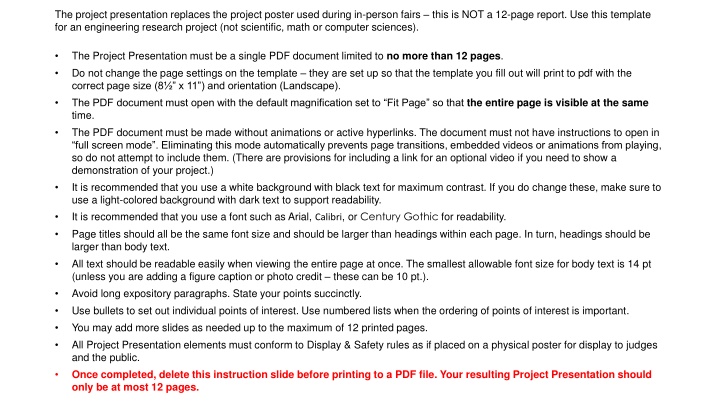
Engineering Research Project Presentation Template
Create a concise single PDF document for an engineering research project presentation using the provided template guidelines. Include sections like Introduction, Methods, and Results showcasing your project details effectively within the specified page limit.
Download Presentation

Please find below an Image/Link to download the presentation.
The content on the website is provided AS IS for your information and personal use only. It may not be sold, licensed, or shared on other websites without obtaining consent from the author. If you encounter any issues during the download, it is possible that the publisher has removed the file from their server.
You are allowed to download the files provided on this website for personal or commercial use, subject to the condition that they are used lawfully. All files are the property of their respective owners.
The content on the website is provided AS IS for your information and personal use only. It may not be sold, licensed, or shared on other websites without obtaining consent from the author.
E N D
Presentation Transcript
The project presentation replaces the project poster used during in-person fairs this is NOT a 12-page report. Use this template for an engineering research project (not scientific, math or computer sciences). The Project Presentation must be a single PDF document limited to no more than 12 pages. Do not change the page settings on the template they are set up so that the template you fill out will print to pdf with the correct page size (8 x 11 ) and orientation (Landscape). The PDF document must open with the default magnification set to Fit Page so that the entire page is visible at the same time. The PDF document must be made without animations or active hyperlinks. The document must not have instructions to open in full screen mode . Eliminating this mode automatically prevents page transitions, embedded videos or animations from playing, so do not attempt to include them. (There are provisions for including a link for an optional video if you need to show a demonstration of your project.) It is recommended that you use a white background with black text for maximum contrast. If you do change these, make sure to use a light-colored background with dark text to support readability. It is recommended that you use a font such as Arial, Calibri, or Century Gothic for readability. Page titles should all be the same font size and should be larger than headings within each page. In turn, headings should be larger than body text. All text should be readable easily when viewing the entire page at once. The smallest allowable font size for body text is 14 pt (unless you are adding a figure caption or photo credit these can be 10 pt.). Avoid long expository paragraphs. State your points succinctly. Use bullets to set out individual points of interest. Use numbered lists when the ordering of points of interest is important. You may add more slides as needed up to the maximum of 12 printed pages. All Project Presentation elements must conform to Display & Safety rules as if placed on a physical poster for display to judges and the public. Once completed, delete this instruction slide before printing to a PDF file. Your resulting Project Presentation should only be at most 12 pages.
Project ID Project Title Finalist Name(s) Optional Project Video URL: Optional Project Demo Video URL:
INTRODUCTION - What is your engineering problem and goal? What problem were you trying to solve? Include a description of your engineering goal. Explain what is known or has already been done to solve this problem, including work on which you may build. You may include a brief review of relevant literature. If this is a continuation project, a brief summary of your prior work is appropriate here. Be sure to distinguish your previous work from this year s project.
METHODS - Explain our methods and procedures for building your design. What did you do? How did you design and produce your prototype? If there is a physical prototype, you may want to include pictures or designs of the prototype. If you tested the prototype, what were your testing procedures? What data did you collect and how did you collect that data? DO NOT include a separate list of materials.
RESULTS - What were the result(s) of your project? How did your prototype meet your engineering goal? If you tested the prototype, provide a summary of testing data tables and figures that illustrate your results. Include relevant statistical analysis of the data.
DISCUSSION - What is your interpretation of these results? What do these results mean? Compare your results with theories, published data, commonly held beliefs, and expected results. Did any questions or problems arise that you were not expecting? Were these problems caused by uncontrolled events? How did you address these? How is your prototype an improvement or advancement over what is currently available?
CONCLUSIONS - What conclusions did you reach? Did your project turn out as you expected? What application(s) do you see for your work?
REFERENCES This section should not exceed one page. Limit your list to the most important references. List the references/documentation used which were not of your own work (i.e. books, journal articles, etc.). Hyperlinks to original source material are the only permissible hyperlinks allowed within the presentation.

